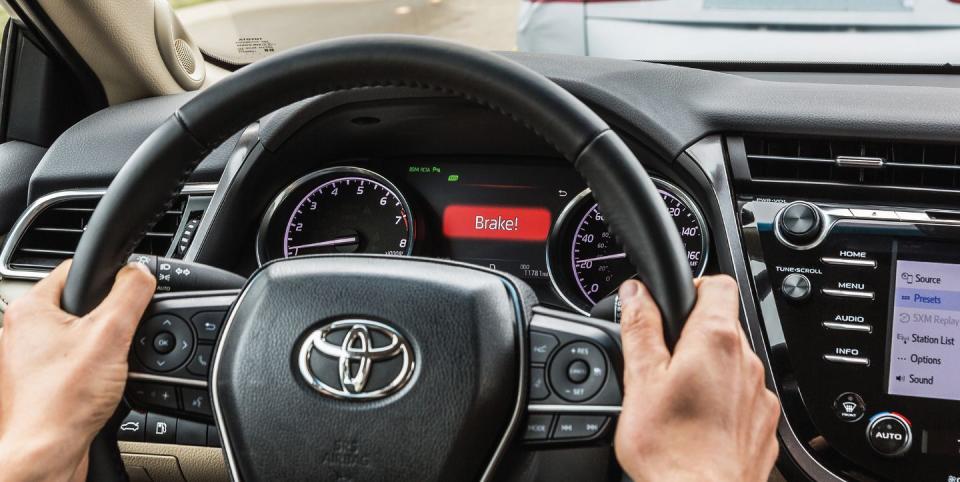How Effective are Driver-Assist Safety Features? Owner's Manuals Warn of Many Ways They Might Not Work

Before we even booked the track for our recent test of automatic-braking systems, we had already discovered differences among the driver-assist systems in our test cars-in their owner's manuals. Just as carmakers have dissimilar approaches to engineering these systems, their legal teams diverge in the writing of their warnings and disclaimers.
All the manuals we looked at gave drivers a general directive similar to this one from Cadillac: "Your complete attention is always required while driving and you should be ready to take action and apply the brakes." Which may seem at odds with the company's touting that its Super Cruise system is the "the world's first true hands-free system for the freeway" and is set up to allow unlimited time with the driver's hands off the steering wheel. But while each manual also warned of situations in which automated emergency braking and other active-safety features might not work, they varied in their degrees of specificity. Toyota's attorneys seem to be the wariest; accompanying the two pages in the Camry's manual describing the operation of its pre-collision system are nine others detailing its limitations.
The primary purpose of all this is to shield the automaker from lawsuits that might arise if a safety system fails to prevent an accident. Yet the carmakers also want to head off class-action suits that claim the technology is defective because of false positives (i.e., instances when the systems engage unnecessarily). A group of plaintiffs filed exactly such a suit against Honda in May.
Unsurprisingly then, neither GM nor Toyota would go on record with us. However, Stanford Law School professor Robert L. Rabin tells us that when it comes to hold-harmless agreements such as these, a more expansive approach is more effective at shielding the carmaker. "It's better if the manufacturer can foresee all of the likely risks," he says. "It also maybe increases the degree of urgency to point out that there are a number of possible risks that the user should be aware of, rather than being lulled into a sense of security by a more general umbrella-type warning."
Still, consumers can and do bring legal action against car companies despite such warnings. Disclaimers buried in the manuals-the Camry's tome runs to 612 pages-can easily be dismissed by plaintiffs' attorneys as unread. "Warning law generally depends on what you would expect the reasonable consumer to digest," says Rabin. "It's a murky area."
From the November 2018 issue
('You Might Also Like',)

 Yahoo Autos
Yahoo Autos 